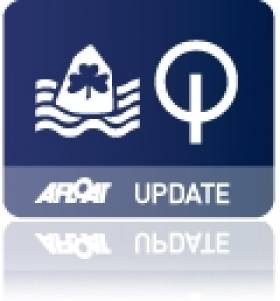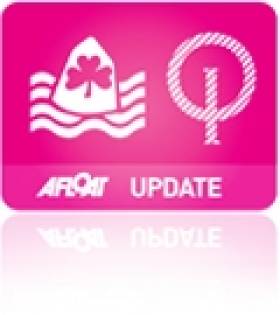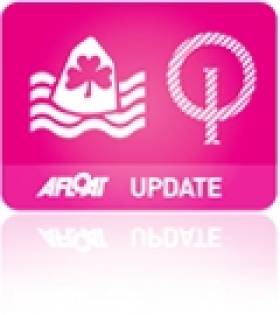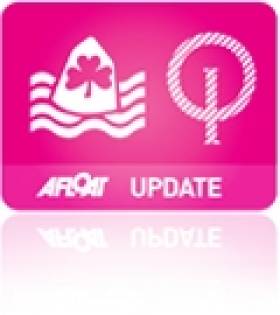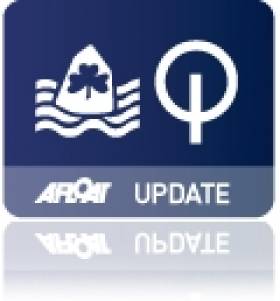Displaying items by tag: Optimist
Irish Optimist European Team to Compete on Lake Balaton
#optimist – The Irish Optimist European Sailing team flew to Hungary yesterday to compete at the Optimist European Championships on Lake Balaton from the 30th June to 6th July.
#optimist – On line insurance specialist, Craftinsure.ie, is to sponsor the 2013 Irish National and Open Optimist dinghy sailing Championships, to be hosted by the National Yacht Club at Dun Laoghaire in August.
The event is anticipated to attract well over 200 young sailors, including a number from the UK and as far away as India, with more expected from other European countries as Dun Laoghaire is the venue for the Optimist European Championships in 2014.
Three Irish junior sailing squads were announced at Royal Cork Yacht Club last weekend at the end of the Irish Optimist class trials in Cork Harbour.
The top 56 Optimist youth sailors in Ireland were in Royal Cork Yacht Club for the second leg of the 2013 series.
The Trials took place over two long weekends. Comprising 16 races it was the selection process for the 2013 Optimist teams. 19 sailors will compete in the Optimist World Championships (Lake Garda), European Championships(Lake Balaton, Hungary) and the French Nationals (Crozon, Brittany).
In addition, all sailors in their 12th year or younger will be selected for the Under 12 squad which will compete in the UK Optimist Nationals in Largs, Scotland.
As well as a runway performance by the Durcan twins, a stand out performance by 11-year old Clare Gorman of Dun Laoghaire qualified her for the Europeans squad. The National Yacht Club sailor became the youngest sailor to reach that level and was the only junior in the top 19 who were invited onto the 3 Irish teams ( she came 12th).

The Europeans team: Peter Fagan SSC, Richard McGinley, Rebecca O'Shaughnessy RCYC, Gemma McDowell MYC, Loghlen Rickard, Clare Gorman NYC and Alex O'Grady HYC
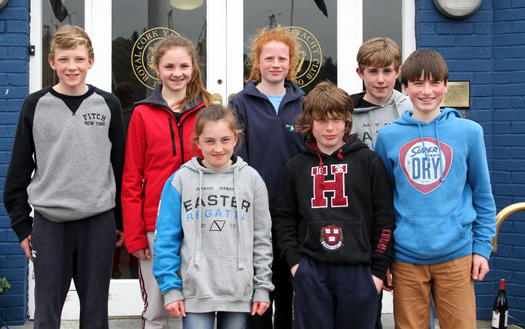
The International Development Team: Jamie O'Grady HYC, Heather Spain, Dara Donnelly, Hugh Perrette NYC, Ros Morgan, Ben Walsh SSC and Kelly Williams RCYC
Photos: Mainsheet Images
2013 Optimist Trials at Crosshaven End in Light airs
As expected, today was light with 4/5 knots of South/South Easterly breeze and this increased to about 8 knots for the second race of the day at Royal Cork's Optimist trials writes Claire Bateman.
This completed the schedule of sixteen races to count for the nineteen places available for the 2013 Irish Optimist Squads.
With a flood tide and a current flowing over the Curlane Bank as it divided around Spike Island both races had general recalls and I got an excellent account of the racing from Toby Hudson – Fowler of the Royal St. George Yacht Club.
He is a very articulate and personable young sailor and a joy to speak with. He is a great ambassador for the RStGYC and a great credit to his family.
He described the recall for the first race that was blackflagged and also the second race that suffered two general recalls and also blackflagged. He was very interesting in his description of the conditions and the wind shifts coming off the land. If he is typical of the competitors coming up in the Optimist Class then they are indeed very fortunate.
The only change in the top five positions today was that James McCann and Alix Buckley changed places with McCann moving to fourth place and this meant that there are three Royal Cork sailors in the top five.
Interestingly enough Cathal O'Regan, a Junior sailor from the Royal Cork, took the bullet in the first race of the day and that is a great fillip for his confidence. In the last race of the day it was Peter Fegan of SSC took the win with Harry Durcan second.
When the three discards were applied Harry Durcan was but a mere three points behind his brother Johnny who took first place overall in the trials.
The next Optimist event listed is the Ulsters to take place on May 25th and 26th, 2013.
#optimist – Twin brothers Harry and Johnny Durcan in top two slots at the youth sailing Optimist Trials with two races left to be sailed today at Royal Cork Yacht Club writes Claire Bateman.
Fifty six Optimist invitees based, on results from National and Regional events during 2012, were invited to participate in trials to select teams to represent Ireland at World and European events. A selection of an under twelve years Development Squad will also be made to compete in Britain.
The first trial took place at Lough Derg Sailing Club consisting of an eight race series and the second trial, also an eight race series, is currently due to finish at Royal Cork Yacht Club today.
14 year old twins Johnny and Harry Durcan of the host club, currently lead the fleet on 32 and 43 points respectively. However, Harry is all set try to top his brother tomorrow. Johnny, an all round sailor, has emerged from his Optimist specialist twin's shadow, to hold first place by 11 points followed by Megan Parker of SSC in third place on 71 points followed in fourth place by her club mate Alix Buckley on 80 points.
In fifth place is James McCann of the host club on 81 points.
The weather yesterday was 15 to 22 knots of wind which tested the fleet especially the under twelves, and congratulations are due to all on having made the trials and putting up a tremendous display of dedicated sailing.
Huge excitement this morning as the top 56 Optimist youth sailors in Ireland congregate in Royal Cork Yacht Club for the second leg of the 2013 Trials series in Cork Harbour.
The Trials series takes place over two long weekends. Comprising 16 races it is the selection process for the 2013 Optimist teams. 19 sailors will compete in the Optimist World Championships (Lake Garda), European Championships(Lake Balaton, Hungary) and the French Nationals (Crozon, Brittany).
In addition, all sailors in their 12th year or younger will be selected for the Under 12 squad which will compete in the UK Optimist Nationals in Largs, Scotland.
The first leg of Trials traditionally coincides with the Youth Nationals event, so 8 races have already been completed in Lough Derg Yacht Club over the Easter holiday. The host club for the second leg (RYC) is watching its own sailors anxiously as four of them are currently placed in the top 5 positions, which will make the Worlds team - Harry and Johnny Durcan, Richard McGinley and James McCann, with Alix Buckley (SSC) the only girl in the top 5.
On the water, the Race Officer on Irish Mist was able to set up his mark close to the no. 10 buoy thus giving a long beat in to Luck beach and the fleet got in three races today and the trials continue tomorrow and Monday.
Weather Forces Cancellation of Brassed Off Cup
#Optimist - Howth Yacht Club has announced that the annual Brassed Off Cup for Optimists scheduled to be held tomorrow 29 March (Good Friday) has been cancelled due to the persistent wintry conditions on the East Coast.
The Brassed Off Cup is normally the highlight event capping the end of the club's Brass Monkeys Spring Series - but the unseasonable snowy weather has put paid to the contest for 2013. Better luck next year!
Optimist Sailors Arrive for Baltimore Sailing Club Spring Clinic
#optimist – 150 Optimist sailors, with boats and parents in tow, are converging on Baltimore Sailing Club in West Cork today for what looks to be the largest turn out to date for the annual Optimist Spring training clinic.
Sailors from seven to fifteen years of age will sail in a range of groups, from the pre-regatta groups for those just starting out on their sailing career, to sailors who compete internationally as part of the Irish Optimist squad.
Traditionally, the week's coaching is provided by the best of coaches, and this year will be no different, with a mix of top Irish and international coaches arriving to give sailors a kickstart to the 2013 season.
There is a range of activities arranged, both on and off the water, including a fitness camp for children who are not sailing, a mid-week disco, and the traditional forum for parents and the Optimist Association (IODAI).
Irish Optimist Sailor Wins Top Bermudan Trophy
#optimist – It all came down to the last race for Royal Cork's Douglas Elmes at Bermuda's Renaissance Junior Gold Cup but the young Irish champion who had already won the Irish title in August in Kinsale survived a strong Argentinian challenge today to win the 39 boat event, the first time Ireland has competed in the prestigious Optimist 11 race event. Full results here.
Hamilton harbor set the stage for the final race of the Renaissance Re Junior Gold Cup today. Swiss sailor Damian Suri besting the fleet of 38 international and Bermuda sailors to win the 10th anniversary Renaissance Re trophy for his first place finish today.
Suri had a fantastic race in front of a huge spectator fleet. The race also featured sailors like American Audrey Giblin and Bermudian Chase Cooper very much in the hunt finishing in the top five today.
The Renaissance Re Junior Gold Cup, the overall top prize, went to Douglas Elmes of Ireland who won it after 11 races with 50 points. Second place finisher Tomas di Luciano of Argentina had 54 points.
As this was the 10th anniversary of the Renaissance Re Junior Gold Cup it seemed most fitting that a former junior Opti sailor who attended this event in 2003 won the Argo Group Gold Cup today. Taylor Canfield, who is from the US Virgin Islands and is in his early 20s, was brought here by Peter Holmberg when he was 14.
There is no doubt that the event stays in the minds of both the young sailors from overseas but it also raises the level of sailing for Bermuda's youth sailors who would not normally get to meet world's best. The support for youth sailing here has always been important to people like the late Dick Kempe and in his honor Chase Cooper was given the inaugural Dick Kempe award for being the top Bermuda sailor in this event. Cooper finished in seventh place overall.
The Renaissance Re Junior Gold Cup has had the kind of support that enables sailors to dream of their own futures as sailors and for event chairman Somers Cooper they could not have done it without sponsorship support like this.
Durcan and Fagan Are Optimist Munster Winners
optiimist – A terrific turnout at the 2012 Optimist Munster Championships in Crosshaven at the weekend saw RCYC's Harry Durcan take the Senior Gold title, with Junior Gold going to the National YC's Peter Fagan.
Day 1 saw the fleet sail outside Roche's Point, with the 420 Munster Championships racing the same course as the Optimist fleet. Stronger winds on day 2 brought the fleet inside the harbour, but the weather remained fine over the weekend and 6 races were sailed in both Junior and Senior fleets.
RCYC's Luke Horgan took the Senior Silver title, and Michael Carroll of KYC was Junior Silver champion.


























